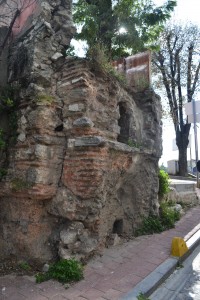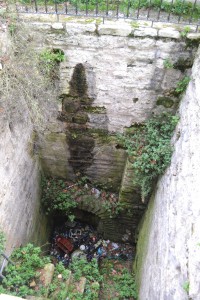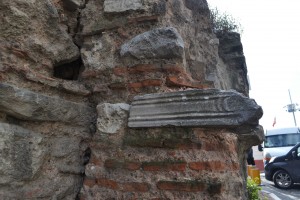Archive for November 25th, 2014
Between 1830 and 1834, Constantius I was the Ecumenical Patriarch. He seems to have been irritated at the haphazard manner in which information about the various Byzantine churches in Istanbul had filtered down the ages to him. He embarked on a campaign (similar to the one being waged at enormousfish.co.uk) to identify these recalcitrant churches in a definitive and Orthodox manner. He examined records from the time of the 1204 Latin invasion of Constantinople. Emperor Alexios V Doukas Mourtzouphlos apparently set up camp by the Pantepoptes Monastery and watched the movements of the Venetian fleet in the Golden Horn near the Church of St Mary of Blachernae. Constantius used contemporary accounts to place the Monastery of Christos Pantepoptes on the site of the Eski Imaret Camii in the Zeyrek area. Pantepoptes means ‘the all-seeing’, an appropriate name for a place from which one could observe goings-on in almost all of the Golden Horn.
The great Alexander van Millingen accepted this identification and told a romantic version of the 1204 story in his wonderful 1912 tome about the Byzantine churches in Istanbul. Since then, the identification of the lovely little red church in Zeyrek has been set in stone.
Cyril Mango, the eminent English scholar of all things Byzantine was having none of this. He produced an elegant dismissal of all arguments that placed Pantepoptes at the current Eski Imaret Camii (or Medrese). Not the least of his points was that the upper part of the Golden Horn where St Mary of Blachernae is situated is not visible from Eski Imaret Camii. Mango places the Monastery of Christos Pantepoptes on the site of Yavuz Sultan Selim Camii, the terrace of which has a stunning view of the Golden Horn. Construction of this mosque began in 1520 and the determination of the great Sultan Süleyman to provide a fitting monument for his warlike father presumably swept any pre-existing buildings away.
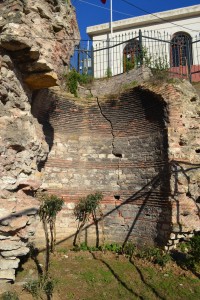
Byzantine vaulting, north-east corner of Cistern of Aspar. Probably substructure of a church.
There is a lot of Byzantine stuff around the Selim Camii, not least of which is the enormous Cistern of Aspar, the construction of which began in 459 in the reign of Marcian. The open cistern is now a sunken garden. Marcian’s name lives on in the imposing column of that name, which is down the hill a little. There is also a ridiculously pretty closed cistern close to the south side of the Cistern of Aspar. This is now a Duğun Sarayı (venue for wedding receptions) although when I chanced upon it in 1991, it was a banana warehouse.
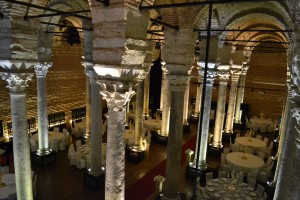
Byzantine Cistern beneath Sivası Tekke Mescidi
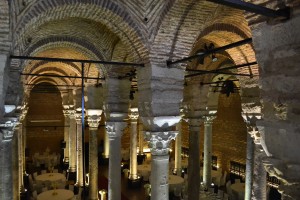
Strange double capitals in 'Sultan Sarnıç'
Byzantine sources suggest that there were many monasteries in this area but omnivorous building work has swallowed these. There must be something interesting beneath the Yavuz Sultan Selim Camii but while that stands, we must be content with the fragments in its vicinity which, if Mango is right, are probably remnants of the Monastery of Christos Pantepoptes.

